In order to preserve and restore various species of waterfowl and near-water birds, the Astrakhan Reserve was created in 1919.
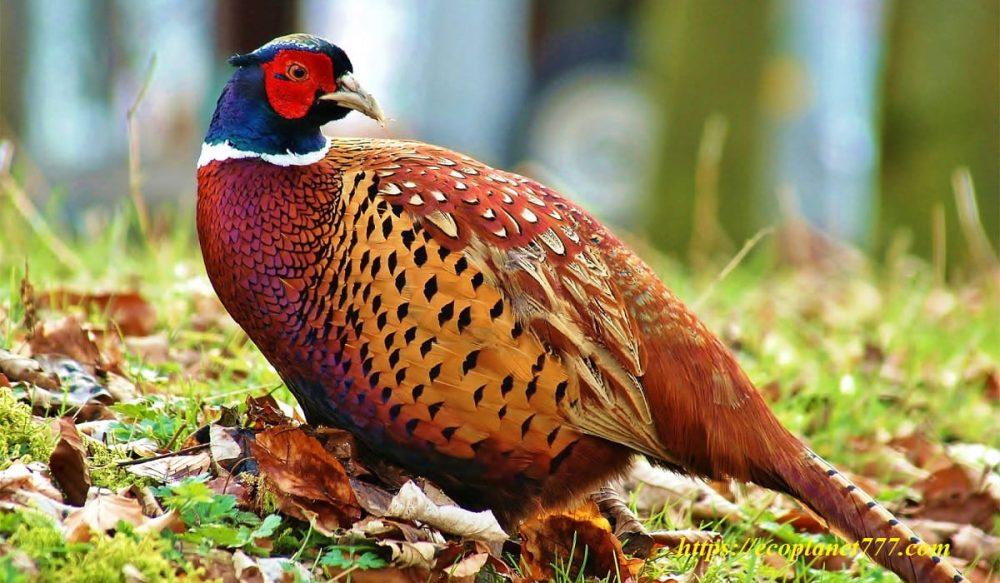
The designation as a biosphere reserve was adopted in 1984 on the basis of the Resolution of the Bureau of the Man and the Biosphere Program of the International Coordinating Council. Since 1971, the territory of the reserve has also been included in the wetlands “Delta of the Volga River”, protected by the Convention on Wetlands of International Importance.
The biosphere reserve is divided into three zones. Each zone is a protected area surrounded by a protective (buffer) zone. The total length of the river network of the reserve is 689.8 km. The area of the marine area of the Caspian Sea is 11,086 hectares.
The abundance of water systems contributes to the diversity of fish and birds: out of 301 species registered in the reserve, 67 are listed in the Red Book of the Russian Federation. Area: 97,816 ha.
The history of the Astrakhan reserve
The idea of creating a biosphere reserve in the Volga delta arose at the beginning of the 20th century, when an expedition of scientists from the Zoological Museum of Moscow State University reported that the short-sighted use of natural resources had already led to a sharp reduction in the number of birds in the region. More than half a million eggs were collected every spring, and the hunt went on unhindered.In 1915, a special commission was formed to organize the formation of a reserve in the delta, but it was postponed by the revolution and civil war that began two years later. However, the efforts of scientists paid off in 1919, when a local government representative obtained an audience with Vladimir Lenin and explained the need to protect at least part of the delta. Lenin approved the plans, and three months later the Astrakhan Reserve, as the first biosphere reserve, was formed under Soviet rule. At that time, the area of the reserve was about one third of its current size, but over time and with increased funding, it has grown to the 66,000 hectares it occupies today.
Over time, the biosphere reserve and the delta as a whole began to attract international attention. In 1976, the delta was named a site of the Ramsar Convention on Wetlands, covering the entire territory of the reserve. In 1984, the biosphere reserve received the status of a UNESCO Biosphere Reserve. Two years later, he opened an environmental monitoring station to conduct detailed studies of plants, animals, and the climate.
Where is the biosphere reserve located?
The Astrakhan Biosphere Reserve is located about 90 km from the city of Astrakhan in the Volga Delta and the North Caspian Sea. Main area: 67,917 ha (buffer zone: 31,000 ha, transitional zone: 433,620 ha.) Is a predominantly freshwater fluvial wetland complex with permanent and seasonal lakes and rivers.The area is listed as a Ramsar Site as its wetlands are home to up to 750,000 waterfowl (during mild winters).
The climate of the biosphere reserve
Despite the proximity of the sea, the Volga delta is located in the middle of a semi-desert region. Warm winds blowing from the deserts of Central Asia provide abundant sunshine and a frost-free period that lasts 200 days. In summer, the temperature rises to 45 degrees Celsius, and strong local downpours keep the air and soil moist. However, winters are cold and continental, lasting from December to March and freezing even the lower reaches of the delta and the northern part of the Caspian Sea. In spring, floods cover many islands of the reserve, up to 90% of the total area. At an average level, water covers about 70 percent of the territory.
Plants and lotus fields
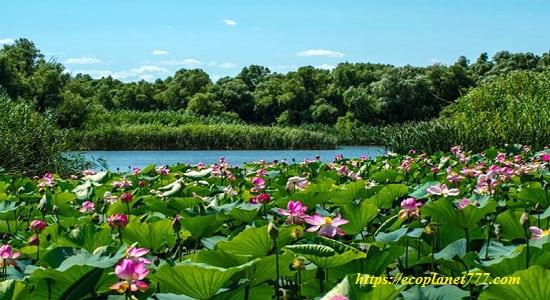
There are four types of vegetation in the Astrakhan Biosphere Reserve: shrub, forest, meadow and water. More than 314 plant species can be found there.
The most striking flora of the reserve is aquatic vegetation. Lotus (Nelumbo caspica), white water lily (Nymphaea alba), yellow water lily (Nuphar lutea) – these plants with large bright flowers create landscapes that amaze travelers and inspire artists.
An outstanding decoration of the Astrakhan Reserve is a very rare and ancient Caspian lotus. There are several hypotheses for the appearance of the lotus in the Volga Delta. It is possible that birds carried it, as lotus nuts were found in their intestines, which can grow when in contact with water. On the other hand, Kalmyk nomads could bring the lotus. The third legend claims that the lotus grows in the Volga deltas. In any case, the lotus has been growing here for many millennia.
At the time of the creation of the reserve, lotus thickets were found only in cultivated reservoirs and covered an area of \u200b\u200bless than one acre. Over the 100 years of the existence of the reserve, the areas occupied by the lotus have increased significantly, and its preservation is a great pride of the Astrakhan reserve. Today, the fields of the Volga Delta are abundantly covered with fragrant lotus flowers, covering an area of more than 12,500 acres and continuing to grow.
The flower of the Caspian lotus is incredibly beautiful, it is also called the Caspian or Astrakhan rose, a real symbol of the Astrakhan region. It blooms from early July to mid-September. During this period, the lotus fields are very colorful, with large pale pink flowers with a diameter of 25-30 cm. Lotuses exude a faint but pleasant sweet smell; their delicate fragrance attracts bees and beetles.
After flowering, lotus seeds ripen. In a cone-shaped box, resembling large hard nuts in a dense shell, there are up to 20 seeds. After maturation, they sink to the bottom, where they can remain for a long time. Lotus reproduces mainly by rhizomes.
The leaves are large and thick, in the form of a shield and covered with a wax coating.Water rolls off them in large drops.
Lotus thickets play an important role in the delta ecosystem. Geese and swans feed on nuts and lotus pulp; wild boars eat rhizomes. In autumn, thickets of this beautiful plant feed tens of thousands of waterfowl. In summer, ducks hide under large leaves.
The beauty of the Caspian lotus is mesmerizing. The opportunity to see it in bloom is a rare pleasure; however, the beautiful flowers must not be plucked as they are strictly protected by law. In addition, a plucked flower will wither in a couple of hours. The Astrakhan Nature Reserve provides visitors with the opportunity to see flowering plants. The ecological trail of the biosphere reserve passes through the fields of lotus thickets. Visitors can take a closer look at the flowers, feel their delicate fragrance and touch the petals.
The bright yellow flowers seen next to the water lilies are the shield nymphaeum, a typical inhabitant of the reserve’s shallow reservoirs. Unusual rounded leaves appear on the surface of the water, resembling a shield in appearance. Bright yellow flowers bloom on long stems. Large flowering meadows of nymphs serve as a refuge for fish fry that feed on the plant.
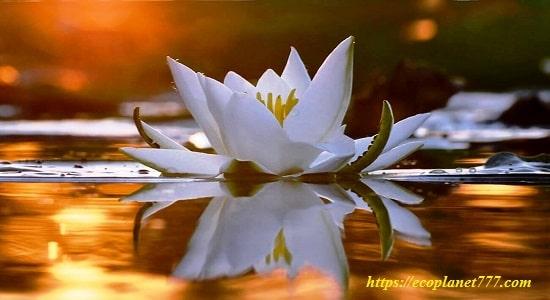
Also in the park you can find Persian nightshade, which is mixed with willow and other near-water plants. This led to the fact that the gallery forests of the reserve began to be called the “Caspian jungle”. Nightshade stalks can grow up to five meters in height, blooming with bright purple flowers, after which berries ripen, which last until mid-December. The bright colors of nightshade decorate the woods.
The gallery forests of the Astrakhan Reserve are dominated by white willows growing along the streams of the Reserve. This is the most common tree species.
Traveling through narrow waterways creates the feeling of exploring a mysterious jungle. During excursions on the ship, visitors discover new secrets of the Volga Delta at every turn of the winding river.
Although the total area of willow forests in the reserve is small, such forests are very important for the environment. Many species of birds (cormorants, eagles, herons) nest on large willow branches. Minks and raccoon dogs build their homes in hollow roots and old tree stumps. Islets of herbaceous plants on trees that have fallen into the water are inhabited by water voles. Birds rest on drifting dead tree branches. Gallery forests are also important in conserving water, preventing soil erosion, bank collapse, and the shrinkage of canals and oxbow lakes. Shady gallery forests create an almost mystical atmosphere, it is comfortable to walk along them even in hot weather.
Under the willows, blackberry bushes grow in abundance, forming dense thickets. It blooms all summer; its juicy dark purple berries last until mid-November.
Biosphere Reserve – Animals

The fauna of the Astrakhan Reserve includes about 1248 species of insects, 4 species of amphibians, 6 species of reptiles, 61 species of fish, 307 species of birds and 40 species of mammals.
In summer, you can see a lot of insects in the meadows – dragonflies, beetles, grasshoppers, butterflies. All of them are an important link in the food chain – they are food for many species of other larger animals.
The lake frog (Rana ridibunda) is the most numerous amphibian species in the Volga Delta. Common species of reptiles in the Astrakhan Reserve are snake (Natrix natrix) and water snake (Natrix tessellata).
Also, 116 species of birds nest there, 237 – during periods of migration, 78 – during wintering and 59 – irregularly fly into the delta. The basis of the local fauna is made up of wetland birds, where they feed and build their nests near the river. More than 30 species belong to forest birds and only 3 species belong to the inhabitants of meadow ecosystems. The Volga Delta is one of the most important regions of the Eurasian continent as a place of mass accumulation of birds during periods of seasonal migration. The territory of the Astrakhan Reserve is part of the wetlands of international importance “Delta of the Volga River”.
The Astrakhan Biosphere Reserve has earned a reputation as a bird sanctuary. All year round, the skies and coastal forests are filled with white-tailed eagles (Haliaeetus albicilla), one of the 27 endangered bird species found in the reserve. Other endangered birds of prey include the osprey (Pandion haliaetus) and the saker falcon (Falco cherrug).Mute swans (Cygnus olor), once almost extinct in the region, made a remarkable comeback in the 20th century, so that now thousands nest in the Volga Delta and hundreds in the reserve. Dalmatian pelicans (Pelicanus crispus), recognizable by their curled tufts of feathers on their heads, are regularly seen skimming the surface of the water.
The Volga Delta is one of the world’s most important nesting sites for waterfowl. Great cormorants (Phalacrocorah carbo) build large noisy colonies in willows along river banks. Colonies of gulls (Chlidonias hybrida, C. niger, C. hirundo) attract carnivorous fish, such as the Welsh catfish (Silurus glanis), which swim up to the shore in the hope of feasting on the chicks that have fallen from their nests. The reserve is characterized by joint nesting – an unusual phenomenon in nature, where great egrets and little egrets (Egretta alba, E. garzetta), loaves (Plegadis falcinellus), black-crowned night herons (Nycticorax nycticorax), Eurasian spoonbill (Platalea leucorodia) and pond herons (Ardeola ralloides) often build nests in the same colonies.
Summer is a particularly colorful season in the reserve, where more than 25,000 ducks molt. Mallards (Anas platyrhynchos) are the first to arrive in June, followed by northern pintails (A. acuta), green-winged teals (A. crecca), teal-teals (A. querquedula) and gray walls (A. strepera). Northern shoveler (A. clypeata) and wigeon (A. penelope) round out this annual gathering of ducks, which nest deep in the reserve’s wildest areas before heading out to the outer reaches of the delta towards the end of August.Away from the water forest birds dominate. Great tits (Parus parus), wood doves (Columba palumbus), golden orioles (Oriolus oriolus) and tree sparrows (Passer montanus) nest on the willows. Reed buntings (Emberiza schoeniclus), warblers (Locustella luscinioides) and bearded tits (Panurus biarmicus) prefer to build their nests in dense reeds. Meanwhile, cuckoos (Cuculus canorus) have spread throughout the biosphere reserve, laying their eggs in unguarded warbler (Acrocephalus spp.) nests and then leaving them.
Mammals on the islands range from wild boars (Sus scrofa), the reserve’s largest wildlife, to tiny mice (Micromys minutus), which build their nests on the stems of tall plants. The main predators of the reserve are foxes (Vulpes vulpes), raccoon dogs (Nycterutes procyonoides), weasels (Mustela nivalis) and minks (M. vison). In the 1940s and 1950s, beavers (Castor fiber) and muskrats (Ondatra zibethica) were released into the biosphere reserve and later became permanent residents of the reserve.
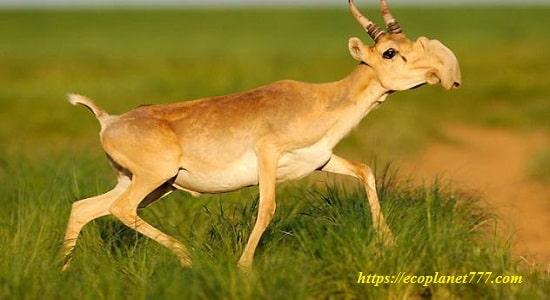
Starting from April, large groups of frogs (Rana ridibunda) gather on the warm shores of the delta, filling the air with their characteristic croaking. Their song reaches its climax in May, when the flood waters cover these banks and the female frogs release their eggs into the water. Less common in the reserve are green toads (Bufo viridis) and spadefoot toads (Pelobates fuscus). European pond turtles (Emys orbicularis) wake up from hibernation in late March or early April, going through two breeding cycles in the summer. The biosphere reserve is also home to Dione’s rat snake (Elaphe dione), two snake species (Natrix tessellata, N. natrix) and agile lizards (Lacerta agilis).
In total, scientists discovered 61 species of fish in the Astrakhan Reserve, among which there are both typical river and lake species. The most numerous fish of the cyprinid family, inhabiting the reservoirs of zander (Stizostedion lucioperca), rudd (Scardinius erythrophthalmus), bleak (Alburnus alburnus) and tench (Tinca tinca). In late spring, common carp (Cyprinus carpio) spawns in groups of 10-15 fish, stretching their body a third of the way out of the water to release their eggs onto the ground or shallow water. These eggs hatch in June, and by July the juveniles swim into the large delta channels, where many become food for larger predatory fish such as colorful European perch (Perca fluviatilis) and northern pike (Esox lucius).
By the beginning of November, oriental bream (Abramis brama orientalis), crucian carp (Carassius carassius) and goldfish (C. auratus gibelia) gather in flocks of hundreds and even thousands of fish.From there, some go into the channels of the delta to hibernate, but most spend the winter at the sea’s edge.
The endangered herring Alosa kessleri volgensis passes through the biosphere reserve during the high water season as part of its annual migration between the Caspian Sea and its spawning grounds in the upper Volga. The relatively narrow waters of the reserve are too shallow for the most valuable Caspian fish – sturgeons, which approach spawning grounds along the Volga River through the largest branch of the delta. However, Russian sturgeon (Acipenser guldenstadti), stellate sturgeon (Acipenser stellatus) and beluga or giant sturgeon (Huso huso) sometimes accidentally pass through the reserve on their way back, as the river inadvertently sweeps them out to sea.
Excursions and tourism
The Astrakhan Biosphere Reserve has been organizing ecological tours in the Volga Delta for more than 30 years and has gained extensive experience in organizing mass excursions for groups of children and adults, as well as individual excursions and tours for nature lovers, ornithologists, and participants in various expeditions.
In the last decade, there has been a tendency to popularize types of tourism that are alternative to fishing and hunting. This is due to the fact that the main tourist brand of the region, which over the past decades has been fishing and hunting, has exhausted itself. Recently, the flow of tourists in the Astrakhan region has grown from 150,000 to 2.5 million people a year.
The multiply increased recreational load began to significantly affect the state of the region’s bioresources, since boats with fishermen and hunters endlessly moving along the delta increase the disturbance factor for feathered inhabitants and mammals, and stocks of fish and game are rapidly declining.
Problems of the reserve
The state of the natural ecosystems of the reserve has deteriorated significantly since the middle of the twentieth century. The increased demand for natural resources throughout the Volga Delta has led to a decrease in the number of birds and fish that once passed through the biosphere reserve. Hydroelectric power plants built on the Volga have changed the flow of water and the migration of fish. Oil and gas exploration and increased interest in tourism in the delta have brought with them pollution that extends to the boundaries of the reserve. Poaching and overfishing in the Caspian Sea have pushed several sturgeon species, especially prized for their dark and flavorful caviar, to the brink of extinction. Even tourism has become a threat to the environment, as the abundance of visitors interferes with nesting birds and spawning fish. On its own, the reserve is simply not large enough to protect all the species found in the delta’s dynamic ecosystems.
Moreover, problems exist even inside the reserve. Poaching and arson are not uncommon due to conflicts between the reserve and local villages, which are characterized by high levels of unemployment and poverty. Fires are especially destructive, destroying nesting sites for numerous birds and old-growth reed colonies that serve as spawning grounds for fish. Therefore, in recent years, the administration of the reserve pays special attention to environmental education in these villages, as well as throughout the Astrakhan region. Further, in line with the current trend of Russian biosphere reserves to expand their activities and influence to regions beyond the territory of the reserve, the Astrakhan Reserve is currently working on the establishment of three biosphere sites in the Caspian Sea to demonstrate sustainable development models. By collaborating with local fishing and tourism agencies and providing reliable data based on years of scientific research, the reserve hopes to lay the foundation for sustainable use of the delta’s natural resources.
P.S.
If you liked and found this information useful, please share it on social media. networks with your friends and acquaintances. This is how you support our project “Ecology of Life” and make your contribution to the preservation of the environment!
- Magnetic storms: the sun is testing the planet🌪️ - 13.06.2024
- Why You Should Drink Chicory: Benefits and Harms 🌿 - 09.06.2024
- Innovative Choice: Sproud Milk – Your Ideal Plant-Based Drink 🌱 - 03.06.2024
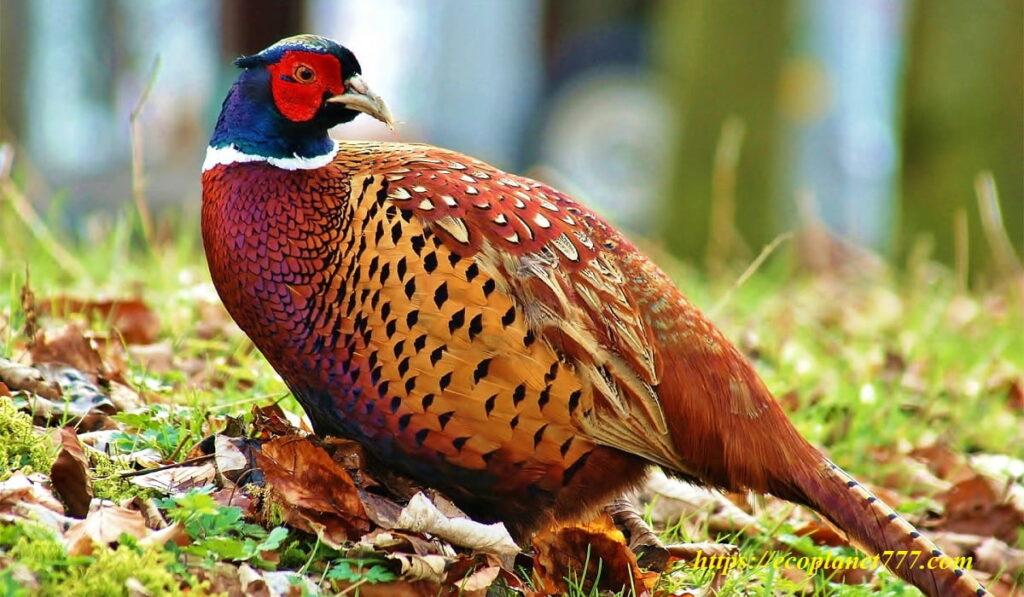


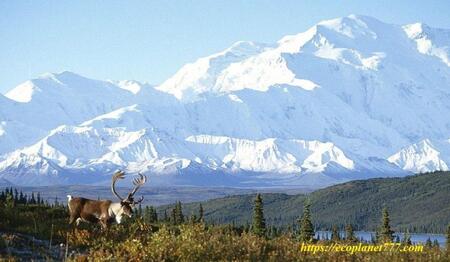
In it something is. I thank for the information.